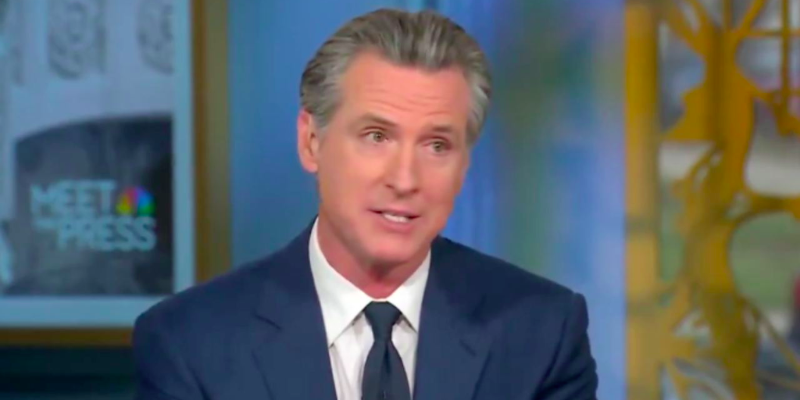As the coronavirus crisis drags on, and forced unemployment leaves many Americans without the income necessary to provide for their families, lines at food banks across the country are lengthening, according to Reuters.
In El Paso, Los Angeles, New York, San Diego, Houston, and Chicago, to name a few, dry goods are scarce, and food banks are running low of supplies, donations, volunteers, and staples. Rice, beans, pasta, are all missing from pantry shelves, and orders are slow to arrive. A San Diego food bank placed an order for $1 million in food and supplies, and after weeks of waiting, still has not received it.
More than 26 million Americans are out of work, and while before the pandemic and massive job losses 1 in 7 citizens were dependent on food aid, that number has doubled and in some cases tripled.
The lack of food on pantry shelves and the long lines are not an indication that food itself is scarce. Farmers have been unable to get their goods to the markets where they are needed. Instead of being easily able to redirect food resources to localities and municipalities where these food banks stand empty, farmers have been destroying livestock that can't be butchered, pouring out milk, destroying fruits and vegetables.
The distribution methods that provide food to restaurants is not easily switched to being retail friendly. It requires a different kind of shipping, packaging, and separate supply chain networks. Bulk supplies need to be repackaged to family sized portions, and food pantries don't have the staff to handle it. One San Diego food bank has ordered a machine that will help with repackaging.
“Should COVID-19 come back later in the year,” said a representative from the food bank, “we’ll be ready for it.”
There's plenty of food in the nation, it's just not getting to where it needs to go.
Keith Dailey, group vice president of corporate affairs at Kroger Co., said that “The U.S. likely has a surplus of food right now. It’s just hard to recover and redistribute.” Kroger is the No. 1 U.S. supermarket operator.
While food lines stretch around street corners, and farmers destroy food, those who could move the food between the two are starting to get organized. The American Trucking Association's executive director Jon Samson is trying to pull together representatives from all the applicable areas, including farmers, restaurant associations, charities, and logistics groups, to handle redistribution and repackaging.
“We’ve got the product, we’ve got the truck and warehouse capacity, and we’ve got the consumer,” Samson said. “The problem is linking all of that together.”
Southeastern grocery store chain Publix has announced that is is planning to address the crisis. It is buying 150,000 pounds of produce and 43,500 gallons of milk from farmers for donation to charities that help feed those in need.
Publix has the capacity to buy and distribute, which makes them able to help both the hungry and the farmers.
Prior to the pandemic, most of the food that landed on food pantry shelves were from "rescue" programs, where grocery stores would give fresh and dry goods that were considered imperfect by grocery store standards, or nearing expiry. Government food programs provided meat and cheese, while donations and purchases rounded out the remainder of the supply.
The disruption in supply lines has upended these mechanisms. Panic-buying reduced the amount of "rescue" food that's normally available, which has meant that grocers have been giving money to food banks instead of food. That, however, has meant that food banks are waiting in line to receive their deliveries just like everyone else. And prices on goods have been substantially higher. One food bank in Nebraska will be spending $1 million on April food stuffs, whereas in a normal month they spend around $70,000.
Farmers would rather donate than destroy, but the amount they have to give would overwhelm storage capacities, and there isn't the labour to handle it. Farmers would prefer that the government buy their goods to redistribute them where they are most needed. The US Agriculture Department, however, has specific, unwavering guidelines in what can be purchased for food banks. These rules would have to be eased in order to help families who need aid.
A new Coronavirus Food Assistance Program should be rolling out by mid-May, and would deliver food from distributors to charities. Connecting the excess food to the hungry is the primary concern, as both continue to increase in quantity.
Join and support independent free thinkers!
We’re independent and can’t be cancelled. The establishment media is increasingly dedicated to divisive cancel culture, corporate wokeism, and political correctness, all while covering up corruption from the corridors of power. The need for fact-based journalism and thoughtful analysis has never been greater. When you support The Post Millennial, you support freedom of the press at a time when it's under direct attack. Join the ranks of independent, free thinkers by supporting us today for as little as $1.
Remind me next month
To find out what personal data we collect and how we use it, please visit our Privacy Policy








